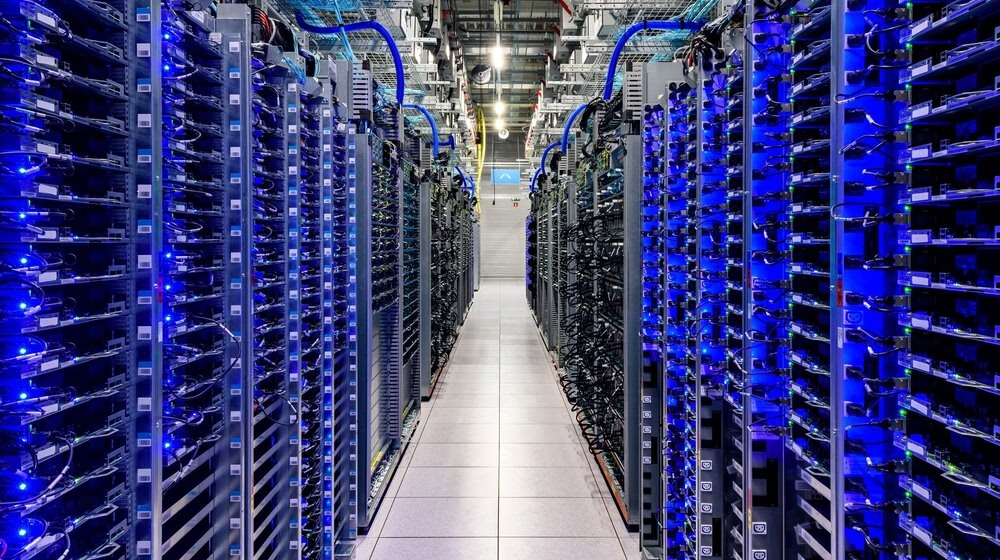Google’s latest sustainability report has unveiled a striking surge in electricity consumption, highlighting the enormous energy demands of its expanding data center infrastructure. In 2024 alone, the tech giant consumed 30.8 million megawatt-hours (MWh) of electricity—more than double the 14.4 million MWh it used just four years ago in 2020.
The report makes it clear that this exponential rise is almost entirely driven by the company’s global network of data centers, which accounted for a staggering 95.8% of its total energy usage last year. Other business operations such as offices and campuses contributed only marginally to the total energy footprint.
This is not a new trend but a continuation of a decade-long escalation. In 2014, Google’s data centers were estimated to consume just over 4 million MWh of electricity. Fast forward to 2024, and that figure has grown more than sevenfold. While this underscores the company’s rapid digital expansion and leadership in AI and cloud services, it also raises serious questions about the environmental sustainability of such growth.
Efficiency Gains Hit a Wall
Despite its reputation as an industry leader in sustainability and energy efficiency, Google’s ability to further optimize its energy usage appears to be hitting a ceiling. One key metric, Power Usage Effectiveness (PUE)—which measures how efficiently a data center uses energy beyond that needed to run the actual servers—has only marginally improved.
In 2024, Google’s global average PUE stood at 1.09, compared to 1.10 the year before. Over the past decade, PUE has only improved by 0.02 points, reflecting the challenges of squeezing out more efficiency from an already optimized system. These diminishing returns suggest that the current strategies to improve operational efficiency are reaching their limits.
Fusion Power: A Long-Term Bet
Faced with the dual challenge of skyrocketing energy demand and slowing efficiency gains, Google is exploring more radical solutions. One of the most notable moves highlighted in the report is its recent agreement with Commonwealth Fusion Systems. Google has pledged to purchase 200 megawatts of electricity generated by nuclear fusion—once the technology becomes commercially viable.
While fusion energy holds immense promise for producing clean and virtually limitless power, it remains many years away from full-scale deployment. Still, this deal signals Google’s intent to position itself at the forefront of sustainable energy sourcing in the long run. The company is clearly aware that traditional energy procurement models will not be sufficient to sustain its growing infrastructure without increasing its carbon footprint.
Balancing Growth and Responsibility
The challenge facing Google is emblematic of the broader tech industry: balancing rapid technological growth—particularly in AI, machine learning, and cloud computing—with environmental stewardship. With generative AI and large language models consuming massive amounts of compute power, energy demands are only expected to rise further in the coming years.
Google’s data centers already run some of the most complex and power-intensive workloads in the world. As the company continues to expand its AI infrastructure, including training state-of-the-art models and offering advanced cloud-based services, energy consumption could climb even higher—unless offset by revolutionary technologies or massive investments in renewable energy.
In its report, Google reiterated its commitment to operating on 24/7 carbon-free energy (CFE) across all its data centers by 2030. While the company has made substantial investments in wind, solar, and other renewable sources, the widening gap between energy consumption and supply from clean sources poses a mounting challenge.
The report serves as both a reflection of the company’s scale and an urgent call for innovation. If clean, scalable solutions like fusion power or next-gen energy storage systems don’t materialize soon, companies like Google may face increasing scrutiny over their environmental impact—even as they continue to lead in technological innovation.
Google’s 2024 sustainability report paints a complex picture: one of remarkable growth and ambition, but also of environmental strain and the limitations of existing energy efficiency methods. As the world watches, Google’s next moves could help shape the future of sustainable tech infrastructure for the entire industry.



